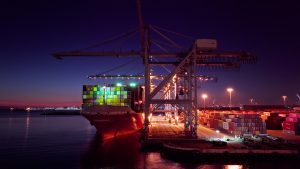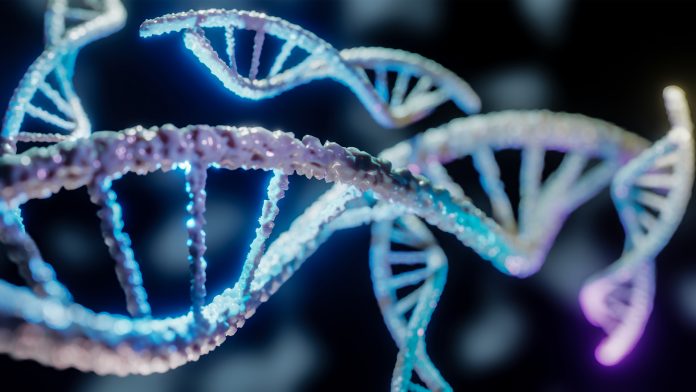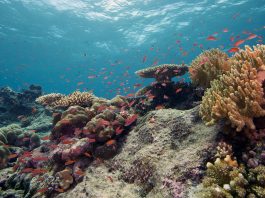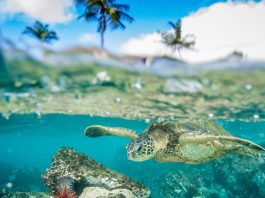According to a new study of the Los Angeles and Long Beach area, environmental DNA is successful in assessing marine biodiversity when key implementation steps are followed.
Researchers have found that marine biodiversity can be measured with environmental DNA (eDNA) – an application of gene sequencing to environmental biology. This method should allow for the rapid assessment of changes in marine life, making environmental DNA a critical tool for managing climate change responses.
However, according to a new study of the Los Angeles and Long Beach area, environmental DNA only works well if key implementation steps are followed.
The study, titled ‘A manager’s guide to using eDNA metabarcoding in marine ecosystems,’ is published in the journal PeerJ.
Why was the study on eDNA conducted?
“What do we need to know to use eDNA in the coastal ocean, and can we make it work well in an important urban setting? Those are the questions that motivated us to launch this study,” said Regina Wetzer, Curator and Director of the Marine Biodiversity Center at the Natural History Museum of Los Angeles County (NHM).
To answer those questions, multiple organisations, such as the Natural History Museum, various academic institutions, environmental consultants, and government agencies, assisted in the research and highlighted the challenges involved in using environmental DNA, but also the widespread interest in its use.
Environmental DNA uses genetic sequencing samples from the environment to inventory biodiversity. In this case, samples from ocean water were taken.
Zack Gold, lead author of the study, stated: “There are genes that differ enough between species that they can be used as identification markers. Every organism sheds DNA by dropping skin cells or other materials, so we can take a cup of seawater, sequence the DNA in it, and use that to inventory organisms in the area.”
Testing environmental DNA’s ability as a tool for assessing biodiversity
The team tested eDNA’s capability to act as an effective tool for biodiversity assessment at the neighbouring Port of Los Angeles and Port of Long Beach, a site of intense environmental interest.

Environmental DNA sampling and conventional ship-based trawl net sampling were paired at seven sites in the port complex. At each of these sites, multiple eDNA samples were collected by the researchers just before the trawl net was towed through the same area. These samples were approximately one litre of seawater each. From this test, the team found that eDNA detected nearly all of the 17 species of fish found in the trawls, but also detected an additional 55 native fish species. To detect additional species through conventional sampling, more sampling trips at a very high expense are required.
“We were happy to see eDNA validated alongside ‘conventional’ sampling, but we were really excited to see the extra information that came from the eDNA,” said Dean Pentcheff, researcher and Programme Manager of the Diversity Initiative for the Southern California Ocean (DISCO) at NHM.
However, a genetic sequence in an eDNA sample can only be resolved to a species if there is a reference sequence on file for that species, so finding that extra information depends on having a complete genetic reference library for all the fish in the area. In this study, all the fish in the environmental DNA samples were only resolved after the researchers added the last few fish references to the sequence library.
The eDNA samples from different locations in the ports produced significantly different species inventories. This showed the environmental DNA in this ocean environment can measure variability across a small area, exposing differences between places as close as a few hundred metres apart.
Recommending the tool for future uses
Now, the authors of the study have assembled a set of recommendations for managers considering environmental DNA as a tool for biodiversity assessment, based on this pilot project. The recommendations cover a careful selection of the identifying genes and specific advice on how to clean up the sequence data from eDNA samples before searching for sequence matches. Creating a regional reference database will be amongst the recommendations due to the successful species resolution that resulted from building a full sequence reference library.
“These samples of the environment are like time capsules that we’ll be able to exploit in the future,” said Adam Wall, Crustacea Collections Manager at NHM. Another of the group’s recommendations was prompted by this sentiment, archiving eDNA samples and sequence data for long-term use.
Further information could come from the samples as sequencing technology improves. The sequence data can be analysed again once genetic data analysis techniques improve and genetic reference libraries are expanded, to get additional results beyond the fish inventories published in this study.





